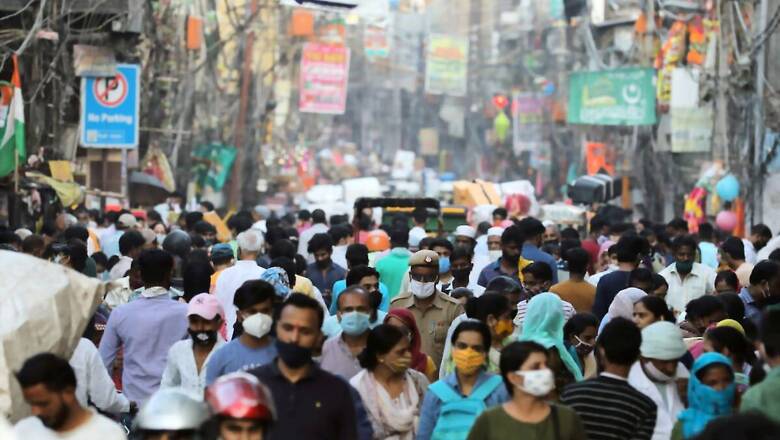
views
After a gradual rise in Covid-19 cases in India between June and September, new cases of Coronavirus infections began dropping from the third week of September. Unlike European countries or US, the Coronavirus peak in India happened much later. But what could be the probable causes behind the drop in new cases and will this drop hold in the period of festivals and winters? News18 explains:
Current Scenario
As on October 26, India had recorded 79, 11,104 cumulative infections of which 6,55,935 were active infections and 71,34,769 people or 90.18 per cent of all those who were infected had recovered. However, India has also reported 1,19,057 deaths due to Covid-19. Only Brazil and US have recorded a higher deaths.
On Monday, India had a case fatality rate of 1.5 per cent, which was at its lowest since March 22 and 14 states including Bihar, Assam, Kerala, Andhra Pradesh and Rajasthan had a case fatality rate that was lower than 1 per cent, according to the Ministry of Health and Family Welfare.
Peak and Decline
Unlike many European countries, new confirmed cases in India rose gradually over a period of almost four months between May and September and registered a faster rate between August and September.
On August 17, the country reported 55,079 cases and the seven day moving average of cases was 62,010. A month later, on September 16, the country reported 97,894 cases which was the peak of new daily recorded cases. The seven day moving average on September 16 was 93,199. The new confirmed cases began dropping from September 16 onward and as on October 25, the seven day moving average of new cases was 51,384.
Probable causes behind Decline
The government has so far not offered any official explanation on the decline of new confirmed infections across the country despite being asked about it in weekly press briefings. However, experts have offered their own assessments and clues on India ‘passing the peak’ of infections.
According to some experts it seems that a large population of susceptible people, especially in urban India, seem to have been exposed to the virus, leading to a decline in transmission.
“The picture is that of a disease which has largely exhausted its supply of susceptible people in major Indian cities, where it has largely ceased to grow,” Gautam Menon, Professor of Physics and Biology at Ashoka University said.
He, however, cautioned that the infection is still spreading into the farther reaches of the country at a slower, and more intermittent pace. “It’s for this reason that happiness over the decrease may be premature. There still remains a large pool of susceptible people in largely rural parts of India who remain at risk of contracting Covid-19. Rural India sees relatively smaller fractions of people with comorbidities such as diabetes or cardio-vascular disease compared to India’s cities. Such co-morbidities aggravate the risk of adverse outcomes upon infection and disease,” he added.
A section of epidemiologists and medical experts have criticised the reliance on rapid antigen tests, which are less accurate compared to molecular tests, and said that the current trends might be a reflection of ramping up testing with rapid antigen testing.
Menon said that though this was possible, a drop in deaths, hospital admissions suggests that the decline is real. “The question would be whether we get through the festival season without a sharp rise in the number of cases. We should know whether the festival season has had an impact in a consequent increase in infected numbers in about 2-3 weeks, certainly by the end of November.
Dr T Jacob John, retired virologist and former professor, Christian Medical College, Vellore, said relying more on antigen tests will not be enough to explain the decline in cases. “It may change the shape of the infection’s descending curve, but the sheer size of testing done has value, even if we take into account underreporting of cases. The massiveness of data to an extent compensates for any inaccuracies in our data on infections. So the trend is pointing in the right direction,” he said.
The epidemic’s decline, he added, is also a natural phenomenon and said that those who took care to not get infected, those living in remote villages and senior citizens protected in families were still susceptible to the infection.
Has the virus containment strategy changed?
The union health ministry has maintained that despite the decline in new cases, the policies of prevention, testing, tracking, treating and containment will continue. The health ministry has warned people to avoid congregations within families during the festival period and advocated use of masks.
It also said that with air pollution on the rise, people with respiratory complications need to take special care about using masks and sanitizing hands as they are more vulnerable to infections.
Read all the Latest News and Breaking News here



















Comments
0 comment